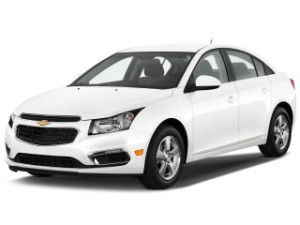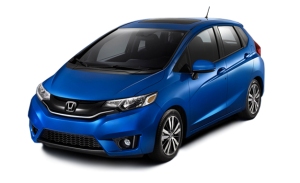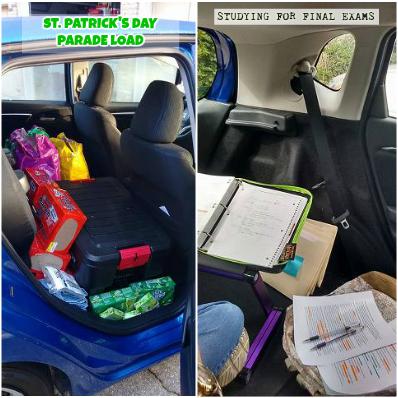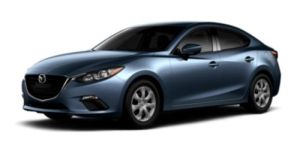Someone rear-ended my poor Tardis – that is what I named my blue, 2015 Honda Fit – so I had a rental car for a little while as my car was repaired. I was given a 2015 Chevy Cruze rental and decided to do a quick review.
Comparisons = The main cars I will be comparing it against are those I have the most experience driving: 1992 Honda Accord, 2014 Mazda3 iSport (referred to as “M3” – review), and 2015 Honda Fit LX (review). Note that I do NOT know what trim level my rental car was.
Bias = First, the variety of cars I’ve driven is obviously limited. Second, I am a single, child-free woman, and most of my driving consists of commuting to work and running errands around town; therefore, I don’t care about sportiness, and I’m not particularly concerned about passenger room/comfort. Last but certainly not least, I only had this car for 10 days and did not drive it every day.
The Awesome:
– Cargo/Trunk = The trunk on this sedan car is quite spacious. It doesn’t match the sheer potential capacity of the Fit, but that’s not a fair comparison since the Fit is a hatchback. Compared to the M3 sedan, the Cruze is the definite winner in terms of cargo/trunk room.
– Tire Pressure Monitoring = I liked this so much, I felt it deserved it’s own point. Both the Fit and M3 only have a warning light that lights up on the dashboard if it senses a low tire, but it doesn’t tell you which tire is low, or how low it is. The Cruze’s monitoring system has an info screen with a diagram of the car, with a PSI listed next to each tire. In theory, this should tell you exactly which tire has what PSI. It doesn’t quite work – the tires on the info screen in my rental were backwards/mislabeled – but the PSI readings seem to be fairly accurate, and seeing the individual numbers is a very useful tool.
The Good:
– Tech Features = Cruise control and adjustable intermittent windshield wiper speeds; nice. I didn’t pay much attention to the buttons on the rear view mirror, but it looked like it had OnStar and a couple other things. There are a lot of buttons and a fairly large screen in the central control area, so there may be other features I didn’t discover in the week I had it.
– Roominess = There’s a lot of room in this car. The back seats didn’t look cramped and the driver area seemed to have plenty of leg room.
– Seats = Not as cushy as some, but still a good level of padding. The headrests are mercifully at a somewhat normal angle, unlike the M3’s painful contraptions. It lacks lumbar support, but that’s true of the Fit and the M3 too, especially when you adjust the M3’s seats to compensate for the terrible headrest.
– Handling = The gas pedal felt nice; it didn’t have the delay/slow start like Nissans, or even the M3 had to a lesser extent. The breaks felt nice, road noise seemed better than the Fit and maybe better than the M3. Good overall as far as pedal feel and driving.
The Bad:
– Backup Camera = It doesn’t have one. Most 2015 model cars have backup cameras, so it’s odd that the Cruze doesn’t have one.
– Button/Center Stack Layout = Some things were in some odd places. None of the sticks on the steering column control the headlights. Instead, the headlights are controlled by a knob under the air-conditioning vent to the driver’s left. The button to pop the trunk is located in the center stack towards the bottom, which seemed like an odd place, and the center stack in general seemed busy/cluttered.
– USB? = I found one USB port in the center armrest (which doesn’t actually function as an armrest). I didn’t do a thorough search, but I didn’t see any other USB ports. If a car is going to have only one USB port, I think the port should either be at the bottom of the center stack, or the armrest should be big enough to fit a large iPod or smart phone inside and be able close with it plugged in.
– Front Cup Holders = The cup holders between the driver and passenger were position so that I was reaching roughly to the side of my thigh, which is towards the edge of my peripheral vision while driving. It would’ve been better if they could’ve been position further forward.
The Ugly:
I did not find anything that would qualify as “Ugly.” However, I only drove the car for about a week; it took longer for the “Ugly” traits to be noticeable in both the M3 and the Fit.
Overall, did I like this car? Yes. I think it’s at least worth a look.




